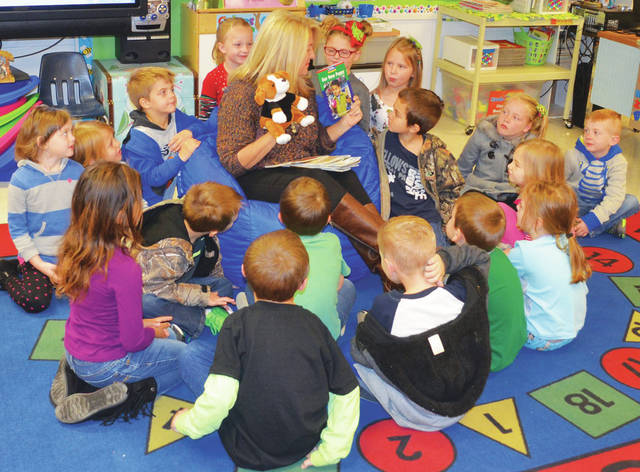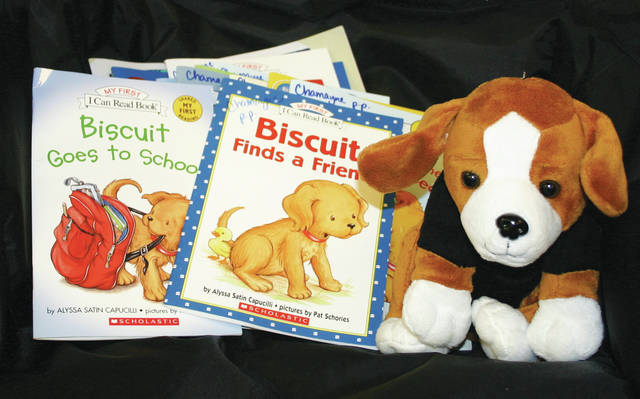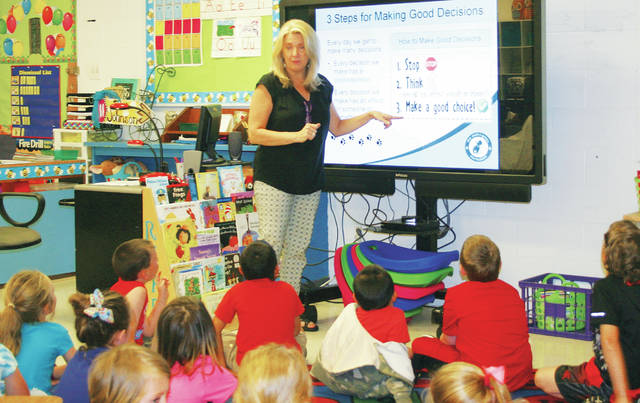JACES kindergarteners learn pro-social skills, empathy, kindness on ‘Mutt-i-gree Mondays’
Published 10:15 am Friday, February 9, 2018
A partnership between the Harlan County Friends of the Shelter and James A. Cawood Elementary School is providing a unique learning opportunity for kindergarten students to learn compassion, empathy, cooperation and responsibility.
Teacher Chamayne Johnson says she has always been an avid animal lover, so she was thrilled last school year when the Friends of the Shelter purchased the Mutt-i-grees Curriculum for kindergarten students at JACES.
“I love that the Mutt-i-grees program includes a social and emotional learning component all designed around dogs and cats. All kids love puppies and kittens so this program immediately captures their attention,” said Johnson.
School Psychologist Stephanie Chitwood is a member of the Friends of the Shelter organization. In her dual roles, Chitwood says, “I had the perfect opportunity to work toward the educational goals of Friends of the Shelter with a mission of preventing cruelty to animals and to assist in the care, adoption and rescue of homeless animals in Harlan County.” The organization also strives to assist in the education of the public on issues regarding responsible pet ownership and the importance of spay and neuter programs.
Chitwood researched appropriate programs and found the Mutt-i-grees Curriculum, which was developed by the North Shore Animal League’s Pet Savers Foundation, in collaboration with Yale University School of the 21st Century and funded by the Cesar Millan Foundation.
Chitwood recalls talking with Johnson about the idea of implementing it in the classroom because she knew Johnson to be an animal lover like herself.
“She has done a tremendous job,” said Chitwood.
The Mutt-i-grees Curriculum can be used with students from preschool through high school.
Johnson says her students are enthusiastic about the lessons and activities.
“They look forward to each Mutt-i-gree lesson. I try to do the lessons on Monday, so I call it Mutt-i-gree Monday,” she said. “They’ll even keep track of the day of week and remind me when it’s Mutt-i-gree Monday. Their favorite parts of the lessons are the photographs or video clips of dogs, when we do a read-aloud with the hand puppet Jax, and the end of the lessons when they each get a dog book to read with a partner.”
The curriculum includes other areas of social-emotional learning, such as resiliency, self- and social awareness, problem solving abilities and teamwork.
“The main focus of school is generally academic achievement. However, in order to succeed in life, it is also important for students to learn about how to communicate, collaborate and appreciate diversity,” said Chitwood. “When children master these and other social and emotional skills, they become better learners. And, when educators focus on social and emotional learning in addition to academics, the school environment becomes more conducive to learning. One of the great aspects of the Mutt-i-grees Curriculum is that the skills it teaches can be used by students to have a better relationship with both animals and other humans.”
Since the program’s implementation last year, Johnson said she has seen students make better decisions with each other, such as being kinder and more thoughtful.
“For instance, we were on the playground when a student found a very large moth that appeared to be injured,” recalled Johnson. “My fellow teacher, Mrs. Erica Moore, gently took it out of harm’s way to where it could hopefully fly away. The students were not only fascinated, they were genuinely concerned about ‘one of God’s creatures,’ as one student insightfully noted.”
Johnson said she is pleased with the program.
“Not only do I feel that teaching animal welfare and humane education is beneficial, I believe it is critical,” she said. “Too many of our students, even at a very young age, have already seen and heard things that no child should be witness to — things that could easily lead to a cold, hardened heart. If they then come to school and are not taught any better, we’re most certainly looking at future abusers, be it animal abusers, child abusers, spouse abusers, or myriad types of self-abusers.”
She recommends the curriculum to other teachers for numerous reasons, including the program’s innovative approach for teaching social and emotional learning, for teaching children about ways to interact with dogs, for learning about helping shelter animals, and for creating an awareness and empathy for all life and living creatures.
Chitwood believes the most important characteristic a person can have is the ability to empathize with another living being.
“When we are able to put ourselves in the position of another and imagine what that person or animal might be experiencing or feeling, it increases the chances that we are going to act with kindness toward that being. Kindness is something that we need more of in this world,” she said. “We’ve all seen and heard about situations in our area where animals have been neglected or abused and sometimes it is so commonplace that people get hardened to it. They don’t view animals as living beings that experience emotions and pain. My hope for this program is that we can catch these students when they are young and instill some empathy and kindness in them so that they will have a desire to treat animals with respect and compassion and carry that forward into adulthood and, in turn, teach others to do the same.”
Any teacher interested in the curriculum may visit www.education.muttigrees.org or contact Chitwood through email at stephanie.chitwood@harlan.kyschools.us.
For more information on the local Friends of the Shelter visit www.hcfos.org or follow the organization on Facebook.







